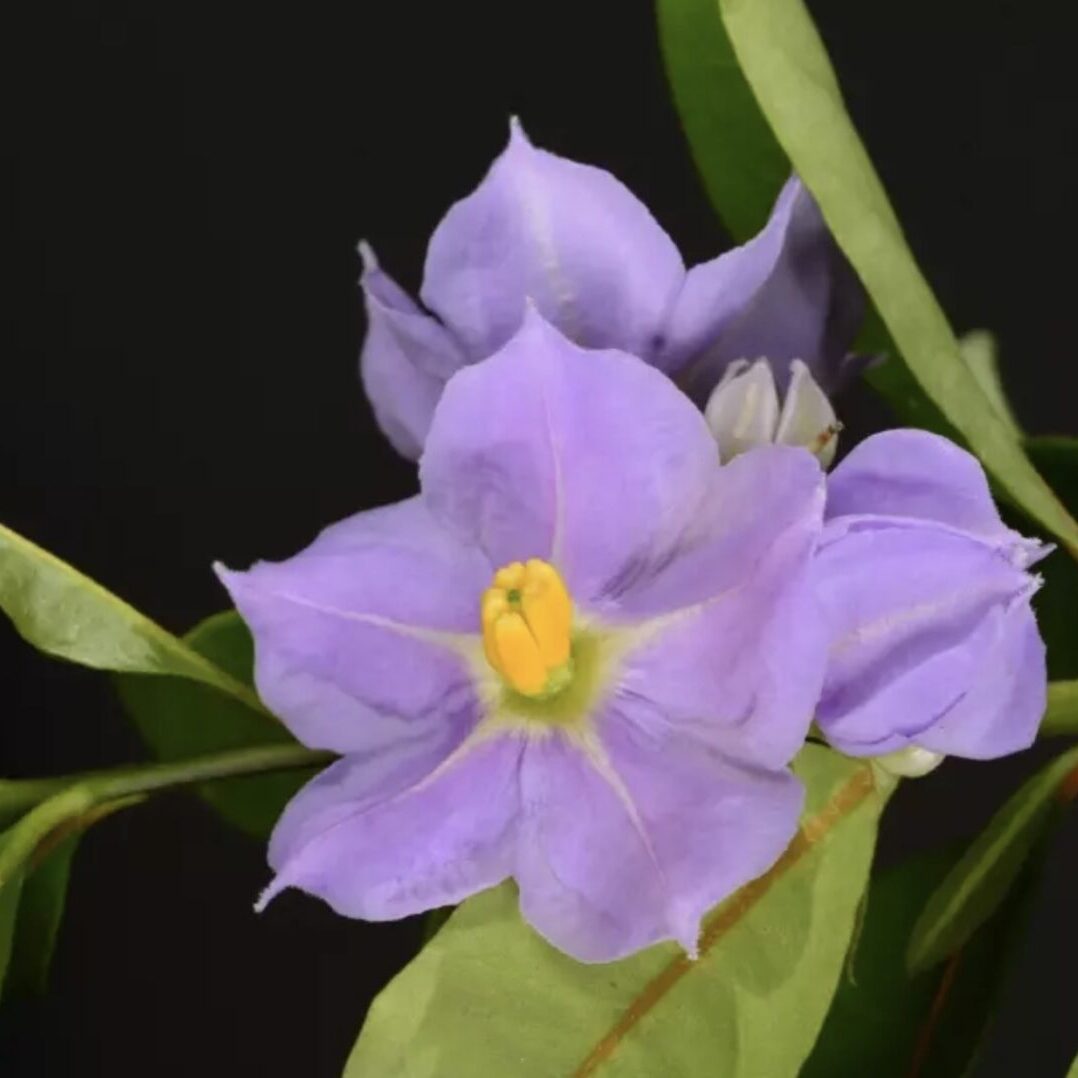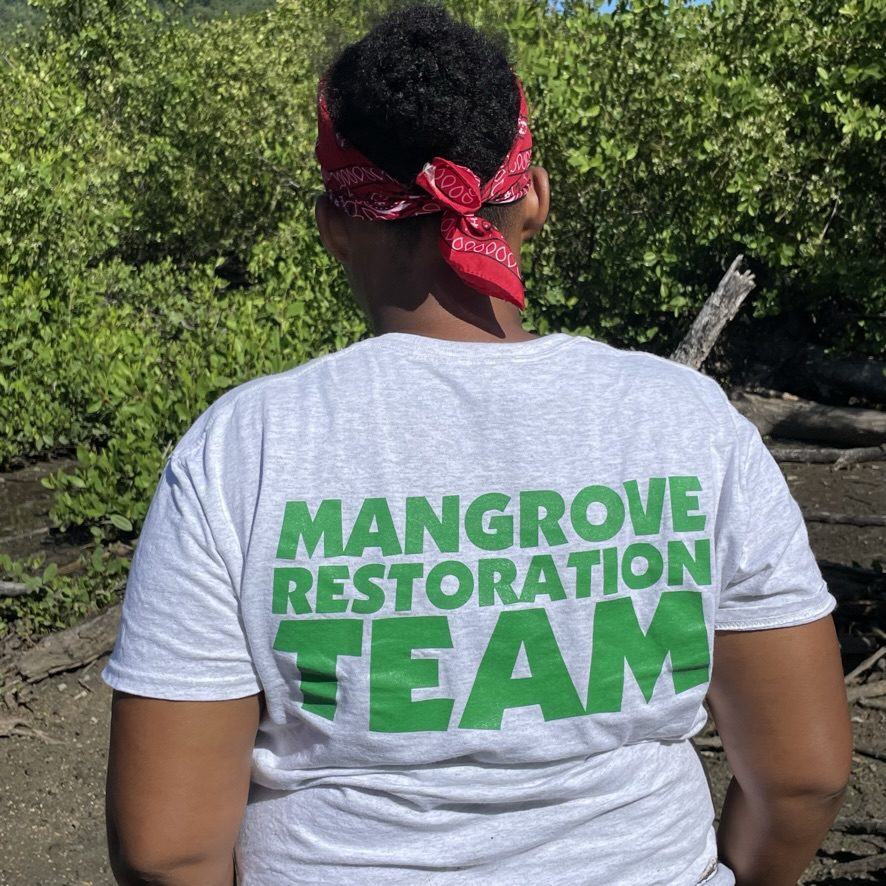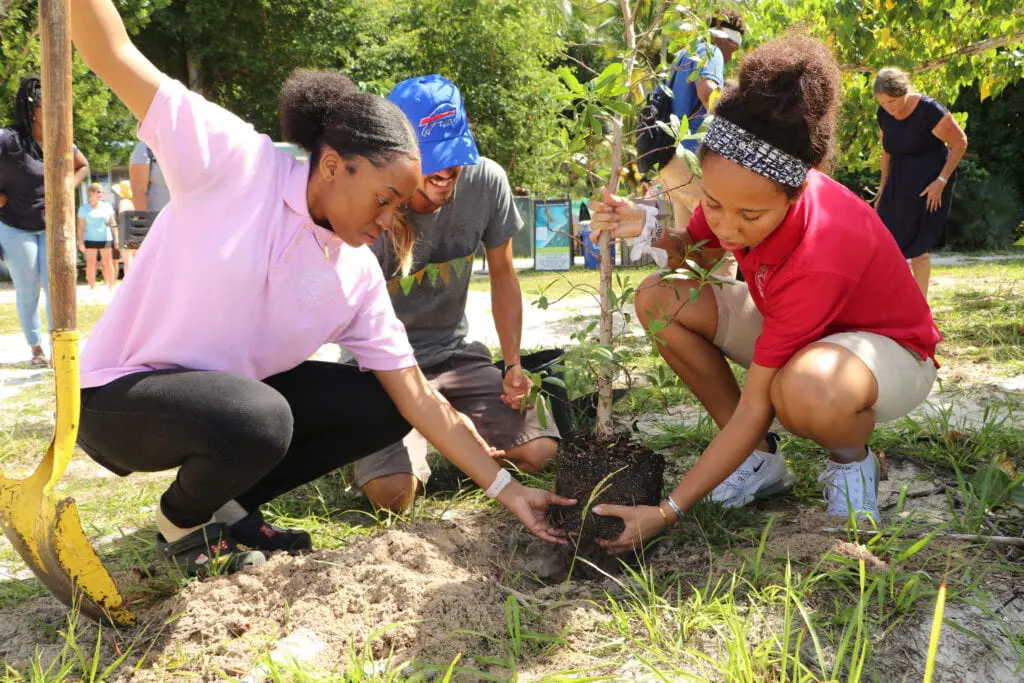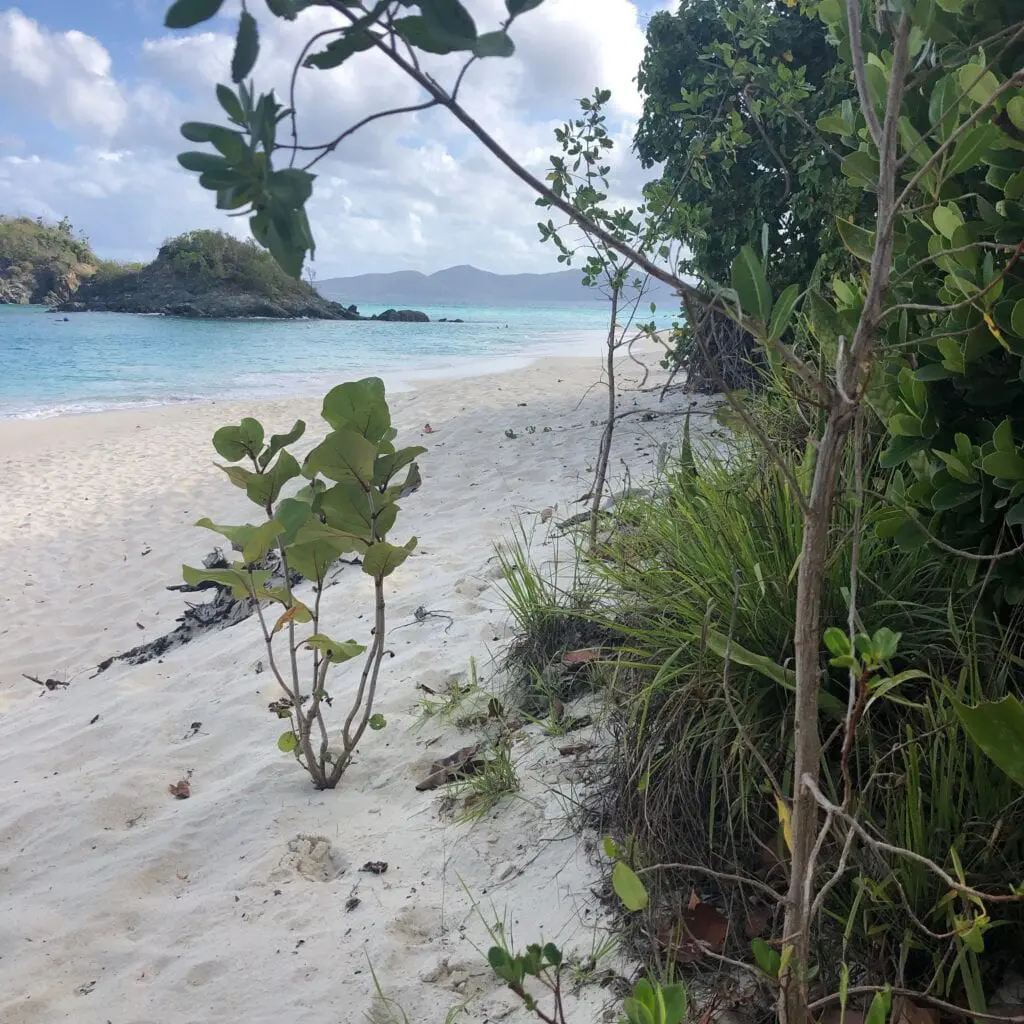Planting for future generations.
Land resource management is integral to the work of the park. A core element of that management is the propagation and protection of plants to address issues like species endangerment and soil erosion as well as replacing vegetation lost in the 2017 hurricanes.
Plant propagation projects include:
- Nursery Management, Plant Propagation & Community Tree Giveaways
- Coastal Planting & Beach Stabilization
- Endangered Plant Species Protection
- Mangrove Restoration & Planting

Nursery Management & Plant Propagation
A plant nursery was established at Cinnamon Bay in January 2021 with the goal of raising native trees for coastal plantings, fruit bearing trees for an annual plant giveaway, and rare/endangered plants as part of a federal grant from the US Fish and Wildlife Service. The nursery has also been utilized as an educational space to teach youth about native plants and their traditional uses.
During 2023 Earth Week, the Friends gave away 300 plants to community members with the goal of promoting food security and access to fresh fruits. The plants included guavaberry, lignum vitae, soursop, guava, pineapple, and more. The Friends also organized a tree planting activity at the annual Earth Day Fair for local school kids. The kids planted papaya, passionfruit, and kapok seeds that are currently being raised at the nursery.

Coastal Planting & Beach Stabilization
The coastline of St. John was severely impacted by Hurricanes Irma and Maria in 2017. In response to this devastation, the Friends and the NPS started a coastal planting initiative with the goal of stabilizing and protecting popular north shore beaches from further erosion. Since 2019, over 1,000 native trees have been planted. Trees were propagated from locally sourced seeds in our nursery and by horticulturist Eleanor Gibney, who also acts as the lead advisor on the project. After planting, volunteers use welded wire fencing to protect against marauding wildlife such as deer, goats, tourists, and donkeys.
The native species that have been planted include Buttonwood, Seagrape, Black Torch, Bay Cedar, Turpentine, Nothing Nut, Necklace Seedpod, Gre Gre, Tyre Palm, Frangipani, Orange Manjack, and more.

Endangered Plant Species Protection
Solanum conocarpum, or marron bacora, is a federally listed endangered plant that is endemic to the Virgin Islands. Friends has been working with the US Fish and Wildlife Service and Virgin Islands National Park to protect existing populations through habitat restoration and establish new populations within the boundaries of VI National Park.
The world’s largest population is located near Salt Pond on St. John and consists of less than 200 individuals. In addition, a population of 100 S. conocarpum plants has been cultivated in our nursery and planted in in a second location.
Invasive plants like guinea grass (Megathyrsus maximus), tan tan (Leucaena leucocephala), and catch and keep (Acacia retusa) have been removed from areas where Solanum is found. Invasive plants outcompete native species for space, water, and light as they change the structure of the vegetative community and restrict available resources for native species.

Mangrove Restoration
A total of 1050 mangroves have been planted in 2022/23 in an Iowa State University and Friends of Virgin Islands National Park collaboration on a large-scale mangrove restoration project in the Annaberg and Leinster Bay areas. The goal of the project is to re-establish sustainable mangrove communities that were devastated by Hurricanes Irma and Maria in 2017.
Mangroves are flowering trees that live in saltwater or brackish water in mudflats near shorelines and are integral to a number of ecosystems on St. John. Mangrove root systems, when submerged, support a diverse community of sponges, ascidians, algae, corals and crabs. They provide crucial habitat for juvenile reef and pelagic fish as well as lobsters. The roots also trap sediment and associated pollutants to improve offshore water quality and slowly build more land as well as providing roosts, nesting habitat, and feeding areas for many bird species.










